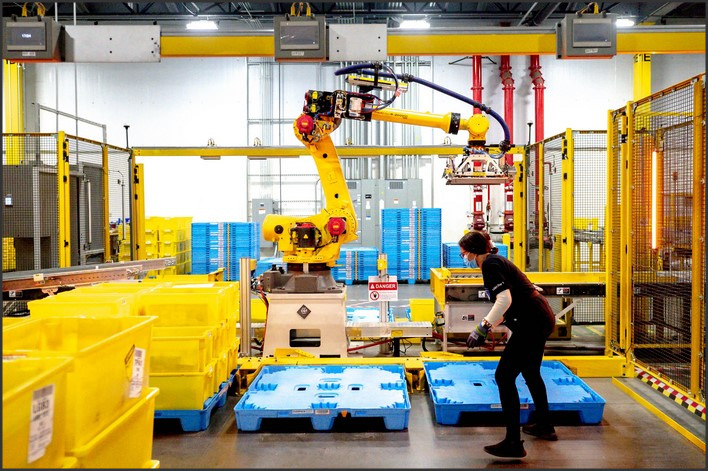Amazon Robot Pickers: The Future of Warehouse Automation

Source : https://platform.vox.com
Amazon Robot Pickers represent the future of warehouse automation, revolutionizing the way goods are sorted and dispatched. These advanced machines, powered by cutting-edge technology, are designed to streamline the picking process in Amazon’s vast warehouses. They are capable of identifying, picking up, and transporting items, significantly reducing human labor and increasing efficiency. The introduction of these robots marks a significant step towards fully automated logistics operations, promising a future where warehouse tasks are performed with unprecedented speed and accuracy.
Exploring the Efficiency of Amazon Robot Pickers: The Future of Warehouse Automation
Amazon, the world’s largest online retailer, has always been at the forefront of technological innovation, constantly seeking ways to improve efficiency and customer service. One of the most significant advancements in recent years has been the introduction of robot pickers in their warehouses, a move that has revolutionized the way Amazon operates and has significant implications for the future of warehouse automation.
Robot pickers, also known as autonomous mobile robots (AMRs), are designed to navigate through warehouses, pick up items, and transport them to their designated locations. These robots are equipped with advanced sensors and algorithms that allow them to move around the warehouse without human intervention, avoiding obstacles and making decisions in real-time.
The introduction of robot pickers has significantly increased the efficiency of Amazon’s operations. Before their introduction, human workers had to walk miles each day around the warehouse, manually picking and packing items. This was not only time-consuming but also physically demanding. With robot pickers, the time taken to pick and pack items has been drastically reduced. The robots can work around the clock without breaks, leading to a significant increase in productivity.
Moreover, the use of robot pickers has also improved accuracy in order fulfillment. Human error is inevitable in any manual process, and picking and packing are no exceptions. However, robots are programmed to perform tasks with precision, reducing the chances of errors. This has led to a decrease in the number of incorrect orders, enhancing customer satisfaction.
The use of robot pickers also has significant implications for worker safety. Warehouses can be hazardous environments, with risks of accidents from heavy lifting and moving machinery. By automating these tasks, robots can reduce the risk of injuries, creating a safer working environment.
However, the rise of robot pickers has also raised concerns about job displacement. As robots become more efficient and capable, there are fears that they could replace human workers, leading to job losses. Amazon has sought to address these concerns by stating that the robots are intended to assist workers rather than replace them. The company has also invested in training programs to help workers acquire new skills and transition to new roles in the era of automation.
Looking ahead, it is clear that robot pickers are set to play a crucial role in the future of warehouse automation. As technology continues to advance, these robots are likely to become even more efficient and capable, further transforming the way warehouses operate.
In conclusion, Amazon’s robot pickers represent a significant step forward in warehouse automation. They have increased efficiency, improved accuracy, and enhanced worker safety. While there are valid concerns about job displacement, it is also clear that these robots offer significant opportunities for workers to acquire new skills and roles. As we look to the future, it is evident that robot pickers and other forms of automation will continue to shape the landscape of warehouse operations.In conclusion, Amazon Robot Pickers represent a significant advancement in warehouse automation. They have the potential to increase efficiency, reduce human error, and streamline the overall process of order fulfillment. As technology continues to evolve, these robots are likely to become an integral part of the future of warehouse operations, reshaping the industry and setting new standards for productivity and accuracy.
